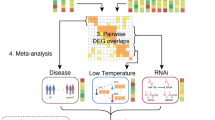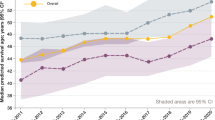Abstract
Cystic fibrosis (CF) is caused by mutations in the CF transmembrane conductance regulator gene (CFTR). Disease severity in CF varies greatly, and sibling studies strongly indicate that genes other than CFTR modify disease outcome. Syntaxin 1A (STX1A) has been reported as a negative regulator of CFTR and other ion channels. We hypothesized that STX1A variants act as a CF modifier by influencing the remaining function of mutated CFTR. We identified STX1A variants by genomic resequencing patients from the Bernese CF Patient Data Registry and applied linear mixed model analysis to establish genotype–phenotype correlations, revealing STX1A rs4363087 (c.467−38A>G) to significantly influence lung function. The same STX1A risk allele was recognized in the European CF Twin and Sibling Study (P=0.0027), demonstrating that the genotype–phenotype association of STX1A to CF disease severity is robust enough to allow replication in two independent CF populations. rs4363087 is in linkage disequilibrium to the exonic variant rs2228607 (c.204C>T). Considering that neither rs4363087 nor rs2228607 changes the amino-acid sequence of STX1A, we investigated their effects on mRNA level. We show that rs2228607 reinforces aberrant splicing of STX1A mRNA, leading to nonsense-mediated mRNA decay. In conclusion, we demonstrate the clinical relevance of STX1A variants in CF, and evidence the functional relevance of STX1A variant rs2228607 at molecular level. Our findings show that genes interacting with CFTR can modify CF disease progression.
Similar content being viewed by others
Log in or create a free account to read this content
Gain free access to this article, as well as selected content from this journal and more on nature.com
or
References
Ratjen F, Döring G : Cystic fibrosis. Lancet 2003; 361: 681–689.
Mall MA : Role of the amiloride-sensitive epithelial Na+ channel in the pathogenesis and as a therapeutic target for cystic fibrosis lung disease. Exp Physiol 2009; 94: 171–174.
Knowles MR, Drumm M : The influence of genetics on cystic fibrosis phenotypes. Cold Spring Harb Perspect Med 2012; 2: a009548.
Drumm ML, Konstan MW, Schluchter MD et al: Genetic modifiers of lung disease in cystic fibrosis. N Engl J Med 2005; 353: 1443–1453.
Gu Y, Harley ITW, Henderson LB et al: Identification of IFRD1 as a modifier gene for cystic fibrosis lung disease. Nature 2009; 458: 1039–1042.
Collaco JM, Vanscoy L, Bremer L et al: Interactions between secondhand smoke and genes that affect cystic fibrosis lung disease. JAMA 2008; 299: 417–424.
Stanke F, Becker T, Cuppens H et al: The TNFalpha receptor TNFRSF1A and genes encoding the amiloride-sensitive sodium channel ENaC as modulators in cystic fibrosis. Hum Genet 2006; 119: 331–343.
Wang X, Venable J, LaPointe P et al: Hsp90 cochaperone Aha1 downregulation rescues misfolding of CFTR in cystic fibrosis. Cell 2006; 127: 803–815.
Gisler FM, von Kanel T, Kraemer R, Schaller A, Gallati S : Identification of SNPs in the cystic fibrosis interactome influencing pulmonary progression in cystic fibrosis. Eur J Hum Genet 2013; 21: 397–403.
Naren AP, Di A, Cormet-Boyaka E et al: Syntaxin 1A is expressed in airway epithelial cells, where it modulates CFTR Cl(-) currents. J Clin Invest 2000; 105: 377–386.
Naren AP, Nelson DJ, Xie W et al: Regulation of CFTR chloride channels by syntaxin and Munc18 isoforms. Nature 1997; 390: 302–305.
Jagadish MN, Tellam JT, Macaulay SL, Gough KH, James DE, Ward CW : Novel isoform of syntaxin 1 is expressed in mammalian cells. Biochem J 1997; 321: 151–156.
Kraemer R, Baldwin DN, Ammann RA, Frey U, Gallati S : Progression of pulmonary hyperinflation and trapped gas associated with genetic and environmental factors in children with cystic fibrosis. Respir Res 2006; 7: 138.
Stanke F, Becker T, Kumar V et al: Genes that determine immunology and inflammation modify the basic defect of impaired ion conductance in cystic fibrosis epithelia. J Med Genet 2011; 48: 24–31.
Herold C, Becker T : Genetic association analysis with FAMHAP: a major program update. Bioinformatics 2009; 25: 134–136.
Knapp M, Becker T : Family-based association analysis with tightly linked markers. Hum Hered 2003; 56: 2–9.
Steiner B, Truninger K, Sanz J, Schaller A, Gallati S : The role of common single-nucleotide polymorphisms on exon 9 and exon 12 skipping in nonmutated CFTR alleles. Hum Mutat 2004; 24: 120–129.
Ivanov I, Lo KC, Hawthorn L, Cowell JK, Ionov Y : Identifying candidate colon cancer tumor suppressor genes using inhibition of nonsense-mediated mRNA decay in colon cancer cells. Oncogene 2007; 26: 2873–2884.
Dormer RL, Dérand R, McNeilly CM et al: Correction of delF508-CFTR activity with benzo(c)quinolizinium compounds through facilitation of its processing in cystic fibrosis airway cells. J Cell Sci 2001; 114: 4073–4081.
Newton CR, Graham A, Heptinstall LE et al: Analysis of any point mutation in DNA. The amplification refractory mutation system (ARMS). Nucleic Acids Res 1989; 17: 2503–2516.
Amaral MD, Clarke LA, Ramalho AS et al: Quantitative methods for the analysis of CFTR transcripts/splicing variants. J Cyst Fibros 2004; 3 (Suppl 2): 17–23.
Nakayama T, Mikoshiba K, Yamamori T, Akagawa K : Expression of syntaxin 1C, an alternative splice variant of HPC-1/syntaxin 1A, is enhanced by phorbol-ester stimulation in astroglioma: participation of the PKC signaling pathway. FEBS Lett 2003; 536: 209–214.
Dorfman R, Sandford A, Taylor C et al: Complex two-gene modulation of lung disease severity in children with cystic fibrosis. J Clin Invest 2008; 118: 1040–1049.
Wright FA, Strug LJ, Doshi VK et al: Genome-wide association and linkage identify modifier loci of lung disease severity in cystic fibrosis at 11p13 and 20q13.2. Nat Genet 2011; 43: 539–546.
Naren AP, Quick MW, Collawn JF, Nelson DJ, Kirk KL : Syntaxin 1A inhibits CFTR chloride channels by means of domain-specific protein-protein interactions. Proc Natl Acad Sci USA 1998; 95: 10972–10977.
Acknowledgements
We are thankful to the patients and clinicians involved in this study, in particular Dr Martin Schöni and Dr Carmen Casaulta. The Swiss National Foundation, Grants No. 3200-066767.01 and 310000-112652, supported this work.
Author information
Authors and Affiliations
Corresponding author
Ethics declarations
Competing interests
The authors declare no conflict of interest.
Additional information
Supplementary Information accompanies this paper on European Journal of Human Genetics website
Supplementary information
Rights and permissions
About this article
Cite this article
von Kanel, T., Stanke, F., Weber, M. et al. Clinical and molecular characterization of the potential CF disease modifier syntaxin 1A. Eur J Hum Genet 21, 1462–1466 (2013). https://doi.org/10.1038/ejhg.2013.57
Received:
Revised:
Accepted:
Published:
Issue date:
DOI: https://doi.org/10.1038/ejhg.2013.57
Keywords
This article is cited by
-
Exocytosis-related genes and response to methylphenidate treatment in adults with ADHD
Molecular Psychiatry (2018)
-
Pluripotent stem cells for disease modeling and drug screening: new perspectives for treatment of cystic fibrosis?
Molecular and Cellular Pediatrics (2015)



